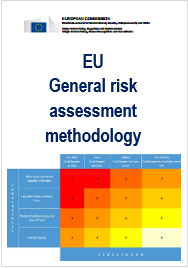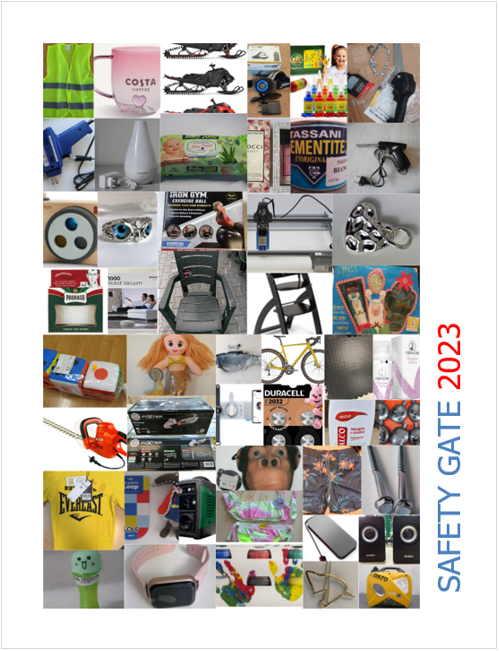Informazione tecnica HSE / 25 ° anno
/ Documenti disponibili:
45.537
/ Documenti scaricati: 34.354.554
/ Documenti scaricati: 34.354.554

This EU general risk assessment methodology implements Article 20 of Regulation (EC) No 765/2008.
This provision obliges Member States to ensure that products which present a serious risk requiring rapid intervention, including a serious risk the effects of which are not immediate, are recalled, withdrawn or that their being made available on their market is prohibited, and that the Commission is informed without delay thereof, in accordance with Article 22.
Article 20 specifies that the decision whether or not a product represents a serious risk must ‘be based on an appropriate risk assessment which takes account of the nature of the hazard and the likelihood of its occurrence’.
Therefore the objective of this methodology is to provide guidance to authorities on when rapid intervention is needed, whether a RAPEX notification should be made and on which measures to take in relation to the non-conformity of a product (proportionality).
The methodology builds on the RAPEX Guidelines, developed within the framework of the Directive on General Product Safety (GPSD) and extends them in two respects:
1) to make sure that the broader categories of public risk protected under EU harmonization legislation can be taken into account (see section 2.2 below);
2) to reflect the specific legal requirements on harmonised products (see sections 3.1 and 3.2).
In particular the risk assessment of a harmonised product does not replace the evaluation of the compliance of the product with the requirements laid down in EU legislation and the relevant harmonised standards. Product compliance or non-compliance remains the basis on which authorities decide whether corrective action is needed.
The risk assessment of a harmonised product complements the product compliance evaluation, as it allows the assessment of how serious the possible consequences of non-compliance could be. It therefore helps to determine the most appropriate type of follow up (rapid intervention, RAPEX notification, proportionate corrective action). More details on possible corrective action depending on the level of risk are given in section 4.
The risk assessment of a harmonised product is inherently linked to the evaluation of its compliance with legal requirements.
The application of this methodology does not entitle risk assessors to make abstraction of or freely interpret the applicable legal requirements and standards, which reflect the choice of the EU legislator as to the acceptable level of product risk. The application of the proposed methodology also adds transparency to the authority’s decisions. An economic operator may be able to better understand an authority’s risk management decision if he is able to understand the risk assessment considerations made by the authority.
This methodology is intended to assist market surveillance authorities when they assess the compliance of products that are subject to Union harmonization legislation.
1. PURPOSE AND SCOPE OF APPLICATION OF THE METHODOLOGY
2. BASIC PRINCIPLES FOR A GENERAL RISK ASSESSMENT METHODOLOGY
2.1. Terminology
2.2. A generalisation of existing methodologies beyond health and safety
2.3. The relevant phases of risk assessment
3. RISK ASSESSMENT PROCESS
3.1. Step 1: Defining the Product
3.2. Step 2: Identifying the hazard(s)
3.3. Step 3: Identifying the subject at risk
3.4. Step 4: Describing how the hazard may harm the subject, i.e. the relevant harm scenario
3.5. Step 5: Determining the potential harm
3.6. Step 6: Determining the severity of harm
3.7. Step 7: Determining the probability of harm
3.8. Step 8: Determining the risk level by combining the severity of harm and the probability of that harm occurring in the scenario described
3.9. Uncertainty concerning risk assessment
4. FROM RISK TO ACTION
European Commission 2016
Modifiche dell’allegato I - Parte b, del decreto legislativo 4 settembre 2002, n. 262, relativo all’emissione acustica ambientale delle macchine ed attrezzature destinate al funz...
ID 21950 | 29.05.2024
Decreto Dirigenziale numero 123 del 20 maggio 2024 - Programma e modalità d'esame per il conseguimento del titolo professionale d...

Tutti gli Approfondimenti relativi ai Report Safety Gate elaborati nel 2023:
Vedi tutti i Report pubblicati Certifico 2023
Safety Gate: Rapid Alert System for ...
Testata editoriale iscritta al n. 22/2024 del registro periodici della cancelleria del Tribunale di Perugia in data 19.11.2024